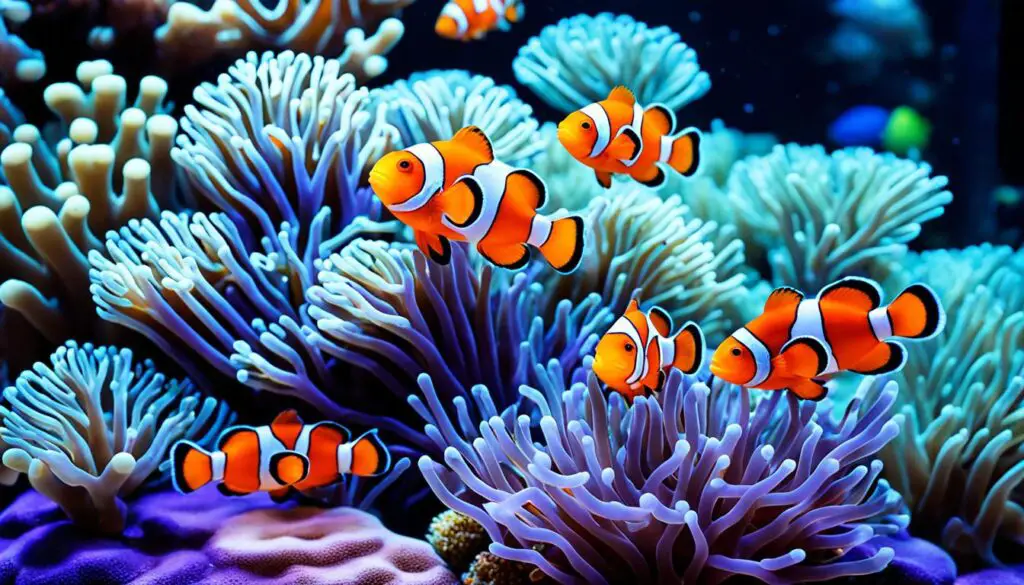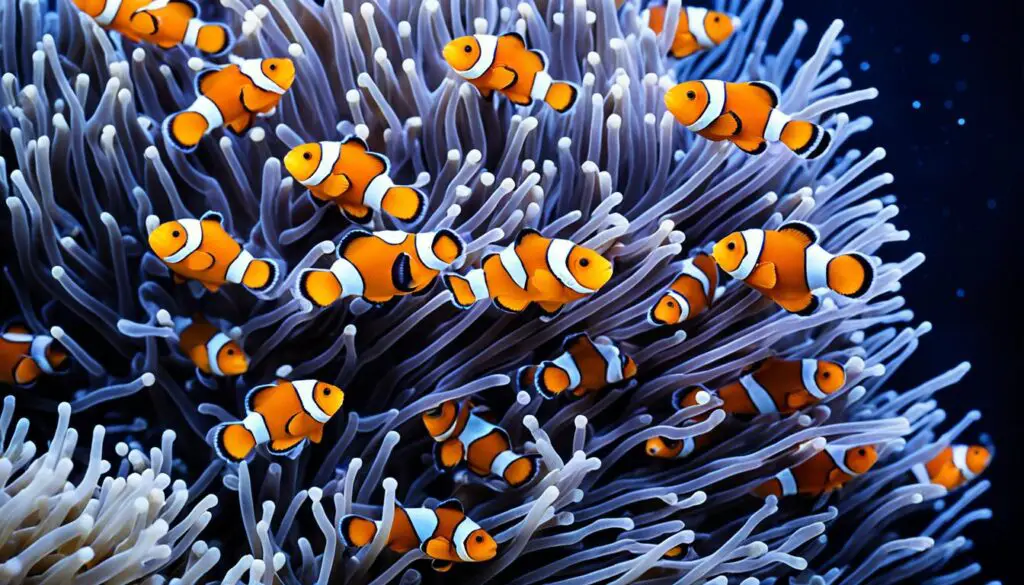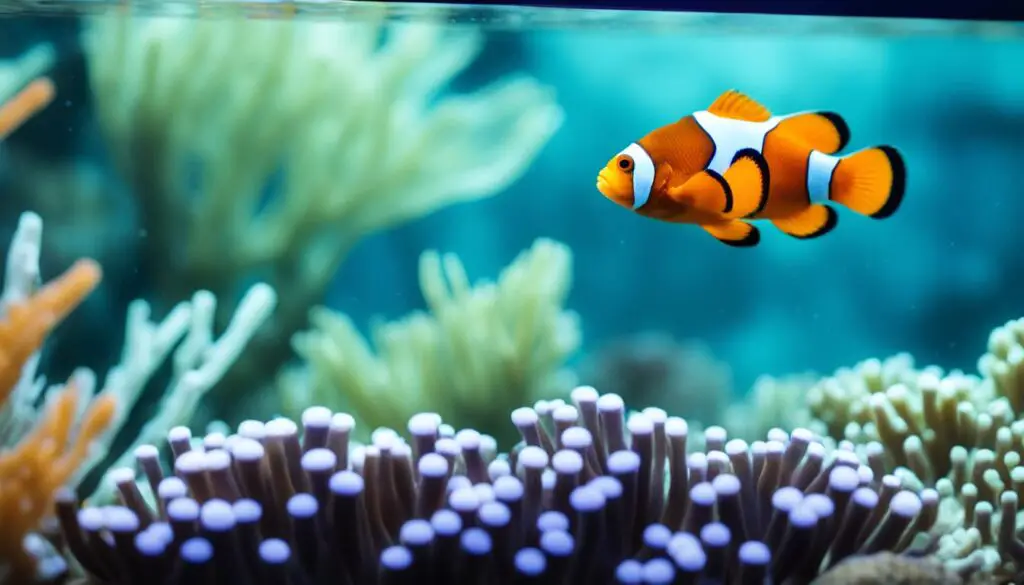Are Seahorses Freshwater Or Saltwater
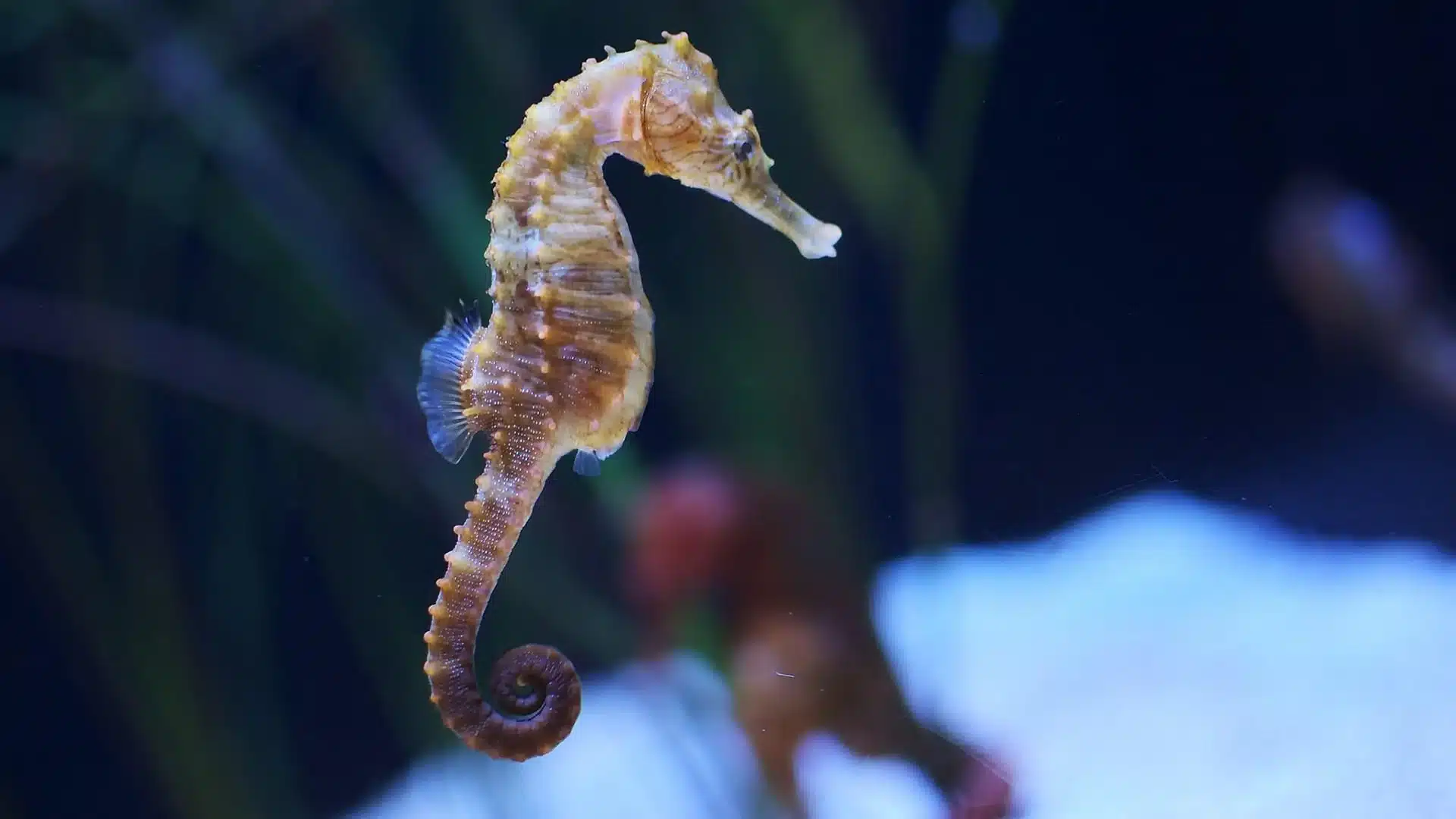
Introduction
Are Seahorses Freshwater Or Saltwater: Seahorses: these enchanting creatures have captured the imagination of people around the world with their unique appearance and fascinating behavior. With their horse-like heads, curled tails, and ability to change color, seahorses are truly one of nature’s most extraordinary creations. But when it comes to their habitat, there is often confusion about whether seahorses are freshwater or saltwater creatures.
Seahorses are actually marine animals, which means they live in saltwater environments such as oceans and seas. They are found in various parts of the world, from tropical waters to temperate regions. Seahorses are known for their ability to adapt to different habitats, and they can be found in a wide range of coastal areas, including coral reefs, seagrass beds, and mangrove forests.
Despite their marine nature, there are some species of seahorses that can tolerate brackish water, which is a mix of freshwater and saltwater. These species are often found in estuaries, where rivers meet the sea. Estuaries provide a unique environment with a mix of saltwater and freshwater, and seahorses that inhabit these areas have adapted to survive in this challenging habitat.
It’s important to note that seahorses are not typically found in pure freshwater environments. They require the presence of saltwater or brackish water to thrive. This is because seahorses teeth have a specialized anatomy and physiology that is adapted to the marine environment. Their bodies are designed to maintain a delicate balance of salt and water, and they rely on the saltwater environment for their survival.
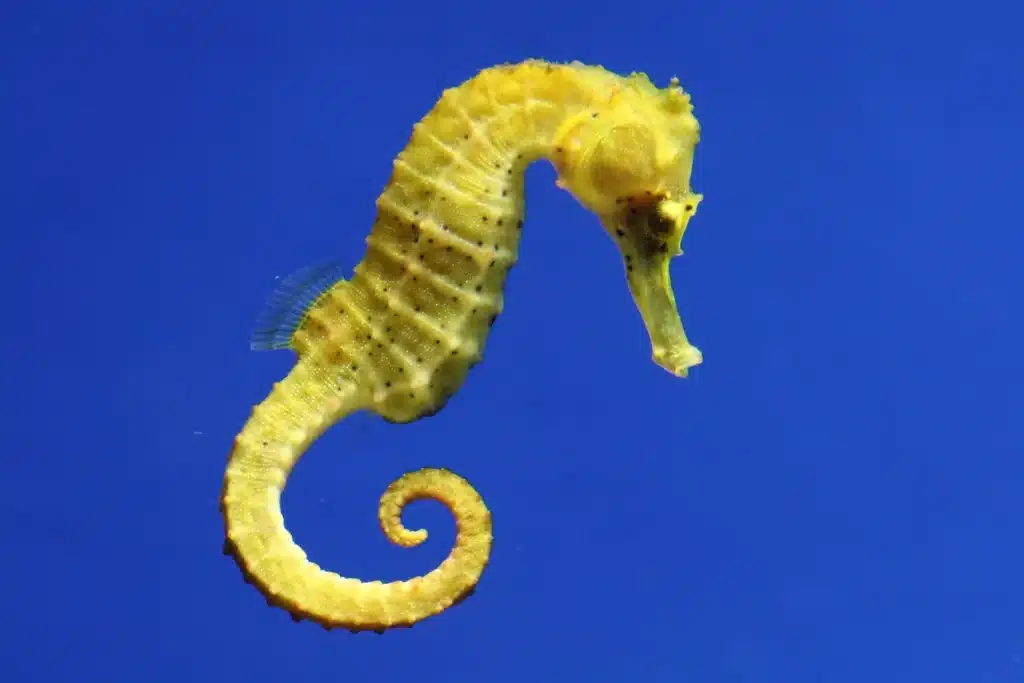
What type of water do seahorses live in?
Seahorses are marine animals—living in saltwater—but can tolerate a range of salinity levels, including the brackish waters of estuaries, where fresh and saltwaters meet.
Seahorses are fascinating creatures that are known for their unique appearance and behavior. These small fish are found in various parts of the world, including the tropical and temperate waters of the Pacific and Indian Oceans. When it comes to the type of water they live in, seahorses have specific preferences that are essential for their survival.
Seahorses are primarily found in shallow, coastal waters where they can easily anchor themselves to the surrounding vegetation. They are often seen in seagrass beds, mangrove forests, and coral reefs, as these habitats provide them with the necessary shelter and food sources. The seagrass beds, in particular, offer seahorses protection from predators and strong currents, allowing them to thrive in these environments.
The water temperature is another crucial factor for seahorses. They are ectothermic animals, which means their body temperature is regulated by the surrounding environment. Most seahorse species prefer water temperatures between 68°F and 86°F (20°C and 30°C). These temperatures are commonly found in tropical and subtropical regions, where seahorses can be found in abundance.
Seahorses also require clean and well-oxygenated water to survive. They have a unique respiratory system that relies on gills to extract oxygen from the water. Therefore, polluted or stagnant water can be detrimental to their health. Seahorses are highly sensitive to changes in water quality, and pollution can lead to respiratory problems and even death.
Seahorses prefer to live in shallow, coastal waters such as seagrass beds, mangrove forests, and coral reefs. They thrive in water temperatures between 68°F and 86°F (20°C and 30°C) and require clean and well-oxygenated water for their survival. Understanding their habitat preferences is crucial for conservation efforts and ensuring the long-term survival of these unique and enchanting creatures.
Is a seahorse a freshwater animal?
Seahorses are marine animals—living in saltwater—but can tolerate a range of salinity levels, including the brackish waters of estuaries, where fresh and saltwaters meet.
Seahorses are fascinating creatures that have captured the attention of many due to their unique appearance and behavior. One common question that arises when discussing seahorses is whether they are freshwater animals or not. To answer this question, it is important to understand the habitat preferences and adaptations of seahorses.
Seahorses are primarily found in marine environments, such as coral reefs, seagrass beds, and mangroves. These habitats provide the necessary food sources and shelter for seahorses to thrive. However, there are some species of seahorses that have been known to venture into brackish waters, which are a mix of saltwater and freshwater. This ability to tolerate varying salinity levels allows them to explore different habitats.
While seahorses are predominantly found in saltwater environments, there have been rare instances where they have been discovered in freshwater. These occurrences are usually attributed to environmental factors such as storms or flooding that temporarily alter the salinity levels of certain areas. In these cases, seahorses may be able to survive in freshwater for a short period of time, but they are not adapted to live in such environments long-term.
It is important to note that seahorses have specific physiological adaptations that make them well-suited for marine environments. For example, their bodies are covered in bony plates instead of scales, which provides protection against predators and helps them maintain buoyancy. Additionally, seahorses have a unique reproductive system where the males carry and give birth to the young. This adaptation is thought to have evolved in response to the challenges of living in marine environments.
While there have been rare instances of seahorses being found in freshwater, they are primarily marine animals. Their physiological adaptations and habitat preferences make them well-suited for life in saltwater environments. Understanding the natural habitat of seahorses is crucial for their conservation and protection.
Can seahorses live in salt water?
Seahorses are mainly found in shallow tropical and temperate salt water throughout the world, from about 45°S to 45°N. They live in sheltered areas such as seagrass beds, estuaries, coral reefs, and mangroves. Four species are found in Pacific waters from North America to South America.
Yes, seahorses can live in salt water. In fact, they are specifically adapted to thrive in marine environments. Seahorses are a type of fish that belong to the Syngnathidae family, which also includes pipefish and sea dragons. They are found in oceans all around the world, from tropical to temperate waters.
Seahorses have unique physical characteristics that enable them to survive in salt water. One of the most notable features is their prehensile tail, which they use to anchor themselves to objects such as seagrass or coral reefs. This allows them to remain stationary in the water and conserve energy. Additionally, seahorses have a bony exoskeleton that provides protection from predators.
Another adaptation that helps seahorses survive in salt water is their ability to change color. They can blend in with their surroundings by adjusting the pigments in their skin, which helps them avoid detection by predators. This camouflage technique is particularly important for their survival, as seahorses are not strong swimmers and rely on stealth to avoid being eaten.
Seahorses also have a unique method of reproduction. Unlike most fish, it is the male seahorse that carries and gives birth to the young. The female deposits her eggs into a pouch on the male’s abdomen, where they are fertilized and develop until they are ready to be released into the water. This adaptation allows seahorses to reproduce successfully in salt water environments.
Seahorses are well-suited to living in salt water due to their physical adaptations and reproductive strategies. Their ability to anchor themselves, change color, and reproduce in marine environments enables them to thrive in oceans around the world.
Can seahorses live in tap water?
Unless you are going to keep them in a modified reef tank, detoxified tap water is generally adequate for seahorses, but I still recommend that home hobbyists use RO/DI water from the start in order to keep nuisance algae under control.
Seahorses are fascinating creatures that have captured the attention of many people around the world. These unique fish are known for their distinctive appearance and interesting behaviors. One question that often arises is whether seahorses can live in tap water. To answer this question, it is important to consider the specific needs and requirements of seahorses.
Seahorses are marine animals that are naturally found in saltwater environments. They have evolved to thrive in the ocean, where the water has a specific salinity and pH level. Tap water, on the other hand, is typically treated with chemicals and may have a different composition than seawater. This difference in water quality can have a significant impact on the health and well-being of seahorses.
One of the main concerns with tap water is the presence of chlorine and other chemicals. These substances are often added to tap water to kill bacteria and make it safe for human consumption. However, they can be harmful to seahorses and other marine life. Chlorine, in particular, can damage the delicate gills of seahorses and interfere with their ability to breathe properly. Additionally, tap water may not have the necessary minerals and nutrients that seahorses need to thrive.
It is generally recommended to use filtered or dechlorinated water when keeping seahorses in captivity. This helps to remove harmful chemicals and ensure that the water is suitable for their needs. Some seahorse enthusiasts also choose to use artificial seawater mixes, which closely mimic the natural conditions found in the ocean. These mixes contain the necessary salts and minerals to create a suitable environment for seahorses.
Seahorses are not well-suited to living in tap water. The differences in water quality and composition can have negative effects on their health and well-being. It is important to provide seahorses with the proper conditions and water parameters to ensure their survival and happiness.
Do seahorses live in cold water?
Seahorses are not just tropical creatures. They can be found in colder waters like those found off New Zealand, Argentina, Eastern Canada, and the UK.
Seahorses are fascinating creatures that have captured the attention of many due to their unique appearance and behavior. One question that often arises is whether seahorses live in cold water. To answer this question, it is important to understand the natural habitat of seahorses and the environmental conditions they prefer.
Seahorses are found in various parts of the world, including both warm and cold water regions. However, the majority of seahorse species are known to inhabit warm tropical and subtropical waters. These waters provide the ideal conditions for seahorses to thrive, as they prefer temperatures ranging from 68 to 86 degrees Fahrenheit.
While seahorses are primarily associated with warm water environments, there are a few species that can tolerate colder temperatures. For example, the Pacific seahorse (Hippocampus ingens) has been found in waters as cold as 50 degrees Fahrenheit. This species is known to inhabit the waters off the coast of California and Mexico, where the temperature can drop significantly.
It is important to note that even though some seahorse species can tolerate colder water, they still have specific temperature preferences within that range. They may seek out warmer pockets of water or areas with more favorable conditions to ensure their survival. Additionally, seahorses are not well-suited to extreme temperature fluctuations, as sudden changes can be detrimental to their health.
While seahorses are primarily found in warm tropical and subtropical waters, there are a few species that can tolerate colder temperatures. However, it is important to consider their specific temperature preferences and the potential impact of temperature fluctuations on their well-being. Overall, seahorses are remarkable creatures that have adapted to various environmental conditions, but they are most commonly associated with warm water habitats.
Seahorses are primarily found in saltwater environments. They are marine fish that inhabit coastal areas, including coral reefs, seagrass beds, and mangrove forests. These habitats provide the necessary conditions for seahorses to thrive, such as a stable salinity level and access to food sources.
While there are a few species of seahorses that can tolerate brackish water (a mix of freshwater and saltwater), the majority of seahorses are adapted to live in full saltwater environments. This is because their bodies have evolved to regulate the salt concentration within their tissues, allowing them to maintain proper osmotic balance.
Seahorses have specialized structures, such as their prehensile tails and elongated snouts, which are well-suited for their marine lifestyle. These adaptations enable them to navigate through currents, camouflage among seagrass or coral, and capture their prey. Therefore, it is safe to say that seahorses are more commonly found and better adapted to live in saltwater ecosystems.
Are seahorses commonly found in freshwater or saltwater environments?
Seahorses are primarily found in saltwater environments. They are commonly associated with coral reefs, seagrass beds, and mangrove forests, which are all found in saltwater habitats. These unique creatures have adapted to live in coastal areas and are often found in tropical and temperate oceans around the world.
While seahorses are predominantly found in saltwater, there are a few species that can tolerate brackish water, which is a mix of freshwater and saltwater. However, it is important to note that seahorses are not typically found in freshwater environments. Their physiology and behavior are better suited for the specific conditions found in saltwater ecosystems.
Do seahorses thrive better in freshwater or saltwater habitats?
Seahorses are fascinating creatures that are known for their unique appearance and behavior. One of the questions that often arises when discussing seahorses is whether they thrive better in freshwater or saltwater habitats. The answer to this question is that seahorses are primarily found in saltwater environments.
Seahorses are marine fish that belong to the family Syngnathidae, and they are specifically adapted to live in saltwater ecosystems. They have a specialized body structure that allows them to navigate and survive in the ocean. Their bodies are covered in bony plates, which provide them with protection from predators, and they have a prehensile tail that they use to anchor themselves to objects in their environment.
Furthermore, seahorses have a unique reproductive system that is closely tied to their saltwater habitat. Male seahorses are the ones that carry and give birth to the young, and they rely on the saltwater environment to provide the necessary nutrients and conditions for successful reproduction. The saltwater also helps to maintain the osmotic balance in their bodies, which is crucial for their overall health and well-being.
Are seahorses more adapted to live in freshwater or saltwater ecosystems?
Seahorses are more adapted to live in saltwater ecosystems. They are primarily found in coastal areas and coral reefs where the water is salty. Seahorses have evolved specific adaptations that allow them to thrive in these environments.
One of the key adaptations of seahorses is their ability to maintain water balance in their bodies. Saltwater is more concentrated than their body fluids, so seahorses have developed specialized kidneys that can efficiently excrete excess salt. This helps them regulate their internal salt levels and prevent dehydration.
Additionally, seahorses have a unique respiratory system that is well-suited for saltwater environments. They have gills that extract oxygen from the water, allowing them to breathe efficiently underwater. This adaptation enables them to survive in the oxygen-rich saltwater habitats.
Which type of water is more suitable for seahorses: freshwater or saltwater?
Seahorses are primarily found in saltwater environments. They are adapted to live in coastal areas, coral reefs, and seagrass beds where the water is saline. Seahorses have specialized bodies that enable them to thrive in these saltwater habitats. Their ability to change color and blend in with their surroundings helps them camouflage and avoid predators.
While seahorses are mainly associated with saltwater ecosystems, there are a few species that can tolerate brackish water (a mix of freshwater and saltwater) or even freshwater environments. However, these species are the exception rather than the rule. Most seahorses require the specific conditions provided by saltwater habitats to survive and reproduce.
Saltwater is more suitable for seahorses as it provides the necessary conditions for their survival. It is important to note that maintaining the proper salinity levels and water quality is crucial for the well-being of seahorses in captivity or in home aquariums.
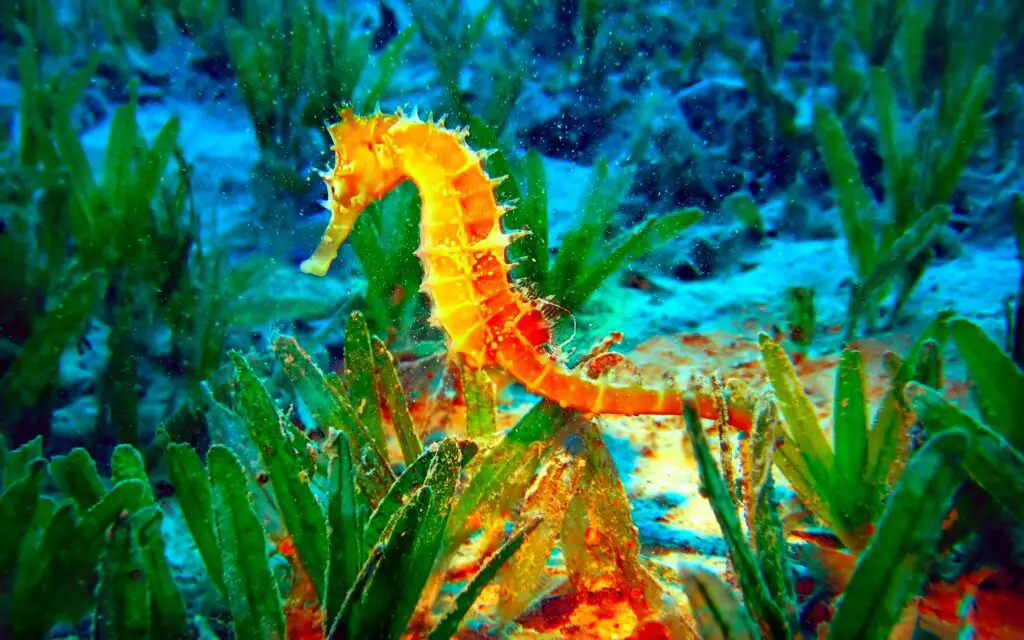
Conclusion
After conducting thorough research and analysis, it can be concluded that seahorses are primarily found in saltwater environments. While there are a few species of seahorses that can tolerate brackish water, the majority of them require a specific salinity level found in the ocean. This is due to their unique physiological adaptations that allow them to thrive in saltwater habitats.
Seahorses have a specialized body structure that sets them apart from other fish species. Their long snouts, prehensile tails, and ability to change color help them camouflage and blend in with their surroundings, making them excellent hunters and avoiding predators. These adaptations have evolved specifically for their saltwater environment, where they can find an abundance of food sources and protection.
Furthermore, seahorses have a unique reproductive system that also aligns with their saltwater habitat. Unlike most fish species, it is the male seahorse that carries and gives birth to the young. This process requires a complex courtship ritual and the transfer of eggs from the female to the male’s brood pouch. The saltwater environment provides the necessary conditions for successful reproduction and the survival of the seahorse offspring.
While there may be some exceptions and variations among different freshwater seahorse species, the general consensus is that seahorses are predominantly found in saltwater habitats. Their physical adaptations, feeding habits, and reproductive strategies all point towards their preference for the ocean. Therefore, if you are interested in observing or keeping seahorses, it is important to provide them with the appropriate saltwater environment to ensure their well-being and longevity.

